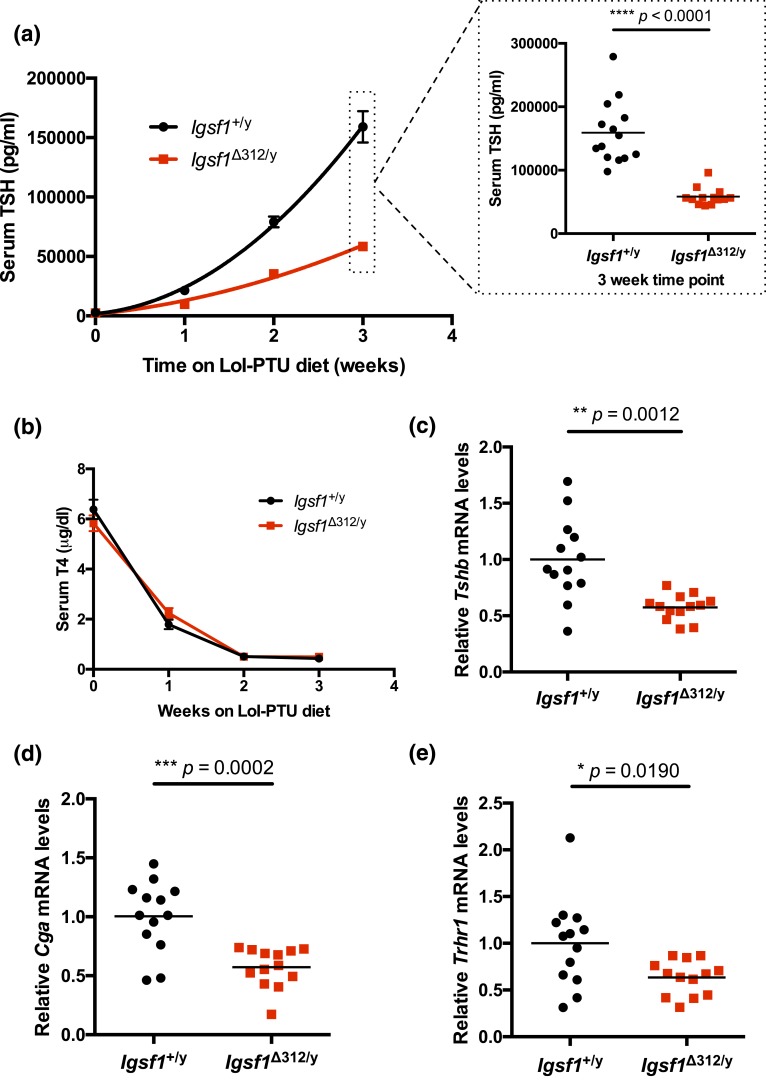Figure 4.
TSH release is blunted in Igsf1Δ312/y mice. Ten-week-old male wild-type (black line with circles) and Igsf1Δ312/y (black line with squares) mice were placed on a LoI/PTU diet for 3 weeks. (a) Serum TSH was measured immediately before, and then at weekly intervals after, mice were placed on the diet. The data were analyzed by hybrid two-way ANOVA [interaction: F(3, 75) = 40.6, ****P < 0.0001; time on diet: F(3, 75) = 184.0, ****P < 0.0001; genotype: F(1, 25) = 77.68, ****P < 0.0001] and post hoc t tests. n = 14 for wild-type and n = 13 for Igsf1Δ312/y. Data at the 3-week time point are expanded to show individual data points (two-tailed t test: t = 7.322, df = 15.16, ****P < 0.0001). (b) T4 levels were measured from the same serum samples as in (a). The data were analyzed by two-way ANOVA: interaction: F(3, 97) = 2.148, N.S. P = 0.0992; time on diet: F(3, 97) = 349.2, ****P < 0.0001; genotype: F(1, 97) = 0.004213, N.S. P = 0.9484). (c–e) Pituitary RNA from the same animals as in (a) was extracted after 3 weeks on the LoI/PTU diet and (c) Tshb, (d) Cga, and (e) Trhr1 mRNA levels were measured by reverse transcriptase qPCR. The data were analyzed by two-tailed t tests: (c) t = 4.039, df = 14.31, **P = 0.0012; (d) t = 4.531, df = 18.73, ***P = 0.0002; (e) t = 2.614, df = 15.66, *P = 0.0190. N.S., not significant.

